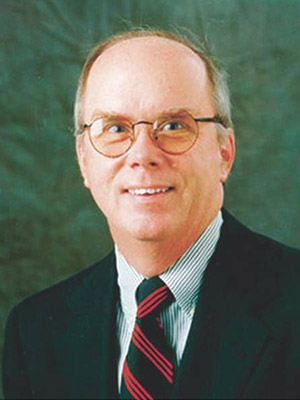
The following article first appeared in, and is excerpted with permission from, Accountable Care News, Volume 1, Number 1, Sample Issue, 2010, pgs. 1-2, Health Policy Publishing, LLC.
In March, 2010, the American health care system took the first step in a journey that will likely change that system forever. The initiating event, of course, was the signing into law by President Obama of H.R. 3590, The Patient Protection and Affordable Care Act, and H.R. 4872, The Health Care and Education Affordability and Reconciliation Act (collectively referred to here as “PPACA”). For many, this legislation was long overdue. Others wish it had never seen the light of day. Nevertheless, legal challenges aside, the PPACA is likely to become settled law, the political and regulatory implementation of which has already begun.
Among the criticisms of the new legislation is that although it significantly expands health care coverage, it does not adequately address the stubborn and unsustainable rate of health care cost increase. But all is not lost on the cost-containment front. There are a few gems tucked into the law that provide a real opportunity for reformers to get serious about promoting, testing, and effecting changes to improve efficiency, improving quality along the way. These less-heralded sections of the legislation offer hope for rational cost-containment, and if they are successful in intent, will give physicians and hospitals a chance to lead that cost-containment process, rather than be eventual “victims” of an insensate budget ax.
Section 3021 of PPACA establishes an Innovation Center within the Centers for Medicare and Medicaid Services (CMS), and Section 3022 establishes a Medicare shared-savings initiative for “Accountable Care Organizations” (ACOs). The intent of these two provisions is to improve both quality and resource stewardship by changing providers’ payment incentives. Taken together, these two sections of the law definitively cast the Medicare program as a leader in delivery system payment and structural reform. Many of the details of the ACO initiative are well spelled out in the law. On the other hand, the new CMS Innovation Center –broader in intent and quite well funded ($10 billion over 10 years) – conveys an unusual scope and degree of authority on the Secretary of Health and Human Services (HHS) to directly implement successful delivery system reforms across the Medicare and Medicaid programs.
To be successful, ACOs and other models of delivery system payment and structural reform will require a new level of cooperation between physicians and hospitals. This type of provider collaboration already exists in some parts of the country, where integrated delivery systems such as Kaiser Permanente, the Mayo Clinic, the Geisinger Health System, and the Henry Ford Health System have been around for decades. However, health care in many parts of the country is still fragmented, often resulting in lower quality and higher costs than in more integrated systems.(1) In addition, integrated systems, as well as some less integrated ones, have the capacity to systematically measure and improve quality and to be accountable to payers and patients for the cost of services. But for many physicians and hospitals, considerable change will be required to create and adapt to the new integrated structures that payment reforms will require.
The obstacles to successful physician-hospital integration are many and significant. The first is historical and psychological. Those of us who are old enough remember the rise and fall of many physician-hospital organizations (PHOs) in the 1990s. Some of these organizations were thrown together in anticipation of capitated payment from health plans, without the requisite skill and human relationships needed for success. Still others might have succeeded, but prepayment was snatched away in the anti-managed care fever of those years. Some skeptics have a hard time believing that “this time it is different.” But it is. This time, the problems are the same, but we likely will not have the late 90s technology-driven economic boom to make health care costs a fading national concern.
That said, across the nation there is enormous variation in local health care traditions, preferences, and market dynamics. A model of reform that would be well accepted today in Boston, San Francisco, or Seattle may seem alien in New York City, Miami, or Birmingham. There is no one-size-fits-all model, which is why Congress gave the CMS Innovation Center such broad authority to experiment.
Local innovation will be required, and many nascent systems will need help and support to form and thrive. Fortunately many “knowledge brokers” are organizing quickly to provide such help. Academic, clinical, and business leaders need to provide an array of models of structural organization and payment incentives for organizations-in-formation to choose from. In recent publications, Shortell, Casalino, and Fisher have begun to point the way, describing several different structural models to achieve physician-hospital joint accountability.(2)(3) Shih and Guterman have shown that different models of “accountable” physician-hospital organizations are compatible with different payment methods, such as blended fee-for-service/capitation, global case rates, and global payment.(4) All of these structural and payment options should be available to providers.
However, in many parts of the country, in many markets, in many communities, and in many institutions, physicians and hospital leaders don’t get along very well. Many physicians favor complete professional autonomy, while many hospital administrators feel more comfortable in a hierarchical management environment. Few hospitals have active physician staff members on the governing body. In some communities, hospitals and physicians actively compete to provide diagnostic and therapeutic procedures. In such environments, structural and payment changes will not be enough to achieve joint accountability and alignment; cultural and governance changes will also be needed. Alexander and Young and Schneider have recently provided guidance in these areas.(5)(6)
Of course, the elephant in the room when it comes to physician-hospital collaboration is antitrust law. One of the reasons that physician-hospital integration has been slow to evolve over the last 15 years has been concern about potential violations of antitrust and other laws and regulations, including Medicare-related civil monetary penalties, self-referral and anti-kickback rules (commonly referred to as “Stark” provisions), and laws on tax exemption. In some cases the perception of legal risk exceeds the reality, but that perception has had a chilling effect on delivery system innovation, where such innovation would be beneficial. In other cases, it may be necessary to modify some of these laws to encourage the type of innovation called for in the health reform legislation. Leibenluft and Sage have reviewed this body of law in detail.(7) Interestingly, Section 3021 of PPACA appears to grant the Secretary of HHS authority to waive at least some of these regulations in the context of an approved provider collaboration under the CMS Innovation Center.
As the noted economist Herbert Stein was reputed to have said, “In the end, unsustainable economic trends are not sustained.” A lower cost trend for the nation is now imperative and will be achieved one way or another. All the stakeholders involved in health care delivery – physicians and physician groups, hospitals, health plans, government as payer and regulator, patients, and others – have an interest in seeing that the way that cost trend reduction is achieved is sound and equitable. Quality of care must be preserved and improved, access to services cannot be impaired, and innovations in care delivery including the “meaningful use” of information technology, must be advanced. These achievements will only be possible if all stakeholders exhibit true leadership. They must be prepared to compromise and in some cases sacrifice narrowly-held interests, as we have recently outlined.(8) In the words of former HHS Secretary John Gardner, “leaders…call us to the sacrifices necessary to achieve our goals. They do not ask more than the community can give, but often ask more than it intended to give or thought it could give.”(9)
Despite the seemingly daunting array of obstacles, physician-hospital integration will proceed because it must. The creation of integrated delivery systems compensated through appropriate payment systems offers the best hope for better quality care at a lower cost. And the ACO and CMS Innovation Center provisions of the health reform law offer the best opportunity in a long time to experiment and make progress in these areas.
NOTES
__________________
(1) WB Weeks, DJ Gottlieb, DJ Nyweide, JM Sutherland, et al, “Higher Health Care Quality And Bigger Savings Found At Large Multispecialty Medical Groups, Health Affairs, 29, no. 5 (2010): 991-997, http://content.healthaffairs.org/cgi/content/abstract/29/5/991.
(2) SM Shortell, LP Casalino, and ES Fisher, “Achieving the Vision: Structural Change,” in F.J. Crosson and L.A. Tollen (eds.), Partners in Health: How Physicians and Hospitals Can Be Accountable Together, (San Francisco: Jossey-Bass), 2010.
(3) SM Shortell and LP Casalino, “Implementing Qualifications Criteria and Technical Assistance for Accountable Care Organizations, JAMA, 303, no. 17 (2010):1747-1748.
(4) S Guterman and A Shih, “Achieving the Vision: Payment Reform,” in Crosson and Tollen (eds.), Partners in Health, 2010.
(5) JA Alexander and GJ Young, “Overcoming Barriers to Improved Collaboration and Alignment: Governance Issues,” in Crosson and Tollen (eds.), Partners in Health, 2010.
(6) K Schneider, “Overcoming Barriers to Improved Collaboration and Alignment: Cultural Issues,” in Crosson and Tollen (eds.), Partners in Health, 2010.
(7) RF Leibenluft and WM Sage, “Overcoming Barriers to Improved Collaboration and Alignment: Legal and Regulatory Issues,” in Crosson and Tollen (eds.), Partners in Health, 2010.
(8) FJ Crosson, “What Needs to Happen Next?” in Crosson and Tollen (eds.), Partners in Health, 2010.
(9) JW Gardner, On Leadership, (New York: The Free Press/Simon and Schuster) 1990.

